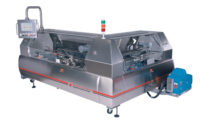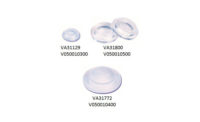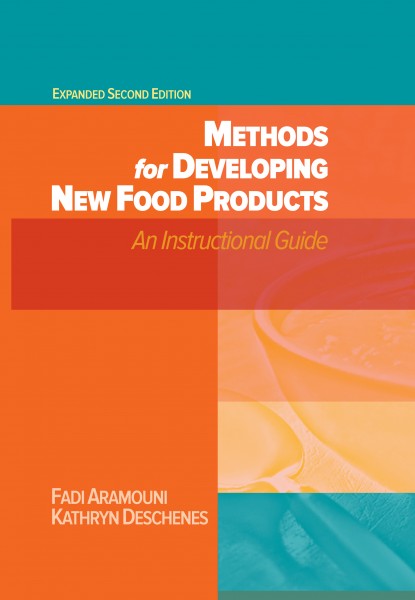Easy-Flow for uniform product cooling
Lyco's new Easy-Flow®, maintains 100-percent uniform product cooling with less
than one percent product damage for many products. But most critical is
that food products pass through the Bacterial Danger Zone in seconds,
greatly reducing the possibility of contamination.
 The cooling of cooked and blanched foods has been an area of particular interest for most food processors that incorporate pasta, rice, vegetables and dry beans into their food products.
The cooling of cooked and blanched foods has been an area of particular interest for most food processors that incorporate pasta, rice, vegetables and dry beans into their food products.
Uniformity in cooling is critical to achieve a refrigerated, frozen or canned meal that will have the desirable texture and taste when it is later reheated for consumption. Blanched pasta cannot be too stiff or too soft. Fettuccine, linguine, tagliatelle and spaghetti cannot stick together or be damaged. Cooked rice should keep its texture, have the right amount of free starch or stickiness and maintain its kernel integrity. Dry beans should not burst or split. Last but not least, vegetables should have the desired firmness and consistency.
Regardless of the cooking or blanching method used, without a highly effective cooling capability these products cannot be obtained with a high degree of uniformity.
Even more important, the rapid chilling of product which has been cooked is an area of food production that is particularly beset with challenging temperature parameters, which if violated, can open the door to product contamination.
Bacteria like to grow in the “Danger Zone,” an environment that is between 40° and 140° F. During a commercial cooking process, raw ingredients are brought up past 140° F as quickly as possible to the final cooking temperature, thus minimizing the time that food products are kept in the Danger Zone. The same is true on the other end of the product line – reducing the temperature as quickly as possible through the Danger Zone to below 40° F is essential.
To achieve a high level of product quality, and maintain the assurance of product safety in a time frame compliant with USDA and FDA standards, requires several conditions of a cooling process, including precisely controlling the temperature and time of the cooling cycle, ensuring the product is being equally cooled, and that proper agitation exists to keep the product separated but undamaged. Few conventional cooling systems, however, have successfully integrated all of these components to effectively deliver 100 percent uniformity in product cooling.
Conventional product cooling
For many years, water-spray and airflow shaker conveyors and rotary rinse wheels were the standard for cooling cooked and blanched food products, but they have their drawbacks.
These chilling methods are only as good as their ability to stop the cooking process. Pasta, rice or other food product is moved along on a conveyor or a rotary wheel while a cold water spray or chilled air is applied to the product stream to reduce its temperature after cooking. These systems are not capable of precisely controlling the temperature and time of the cooling process, and do not provide uniform product coverage by the water-spray or airflow. Nor do they have an adequate agitation capability to keep the product separated.
Because of these factors, they are limited in their ability to uniformly halt the cooking process cycle. To thoroughly cool product from 200° to 40° F may takes as long as 20 minutes, much of this time while it is in the Bacterial Danger Zone.
A significant improvement over the shaker conveyor and rinse wheel methods is the continuous-flow cooling system which utilizes a completely enclosed rotary drum cylinder for cooling the product, directly following the cook cycle. The drum has an internal auger to move the product through while submerged in water – a perforated skin sheet is wrapped around the drum and fixed to the auger’s flights.
These flights gently move the product through the cooler while it is carefully agitated in the water. Consistent process parameters for temperature, time and recipes automatically control the cooling. The system provides increased product quality and reduced product damage to less than one percent, with several minutes reduction time in the Bacterial Danger Zone.
New approach
The latest development in coolers for food processors represents a quantum shift in cooling speed, capable of chilling many pastas, rice, vegetables and dry beans with temperature conversion times as fast as from 200° F as the product exits the cooker to 70° F within 7 seconds, to 55° F within 14 seconds, and to 40° - 50° F in 21 seconds (longer times may be required for specific products).
The new chiller, developed by Lyco Manufacturing and called Easy-Flow®, maintains 100-percent uniform product cooling with less than one percent product damage for many products. But most critical is that food products pass through the Bacterial Danger Zone in seconds, greatly reducing the possibility of contamination.
The system consists of either one, two of three cooling tanks connected in sequence. Products enter into the system through the top of the first tank, fed through a chute or conveyor from the cooker. They then run through the first cooling chamber, exiting through the bottom of the tank, and then are transported to the top of the tank via a pipe and onto a wedgewire-screened dewatering chute.
At this point products are chilled from 200° F to 70° F in approximately 7 seconds time. The food products can now be exported to a conveyor for downstream processing, or can immediately continue into a second in-line chamber, repeating the cycle, and converting the temperature from 70° F to 55° F, in approximately another 7 seconds. Again, the food products can be exported or continue into a third in-line chill tank where they are cooled from 55° F to 40° - 50° F, in approximately an additional 7 seconds. Total cycle time from 200° F to 40° F - 50° F is 21 seconds for many food products.
Each cooling stage is its own section. Additional stages (4 or 5) could be added if there is a need to cool the product even further.
Easy-Flow has a unique, patented plenum technology to achieve its high-speed cooling without damaging the product. The pasta, rice, vegetables or dry beans are pulled through the cooling plenum at the bottom of each tank by Venturi effect, which increases the velocity of the fluid without pump impeller contact. The Venturi effect creates a pressure differential that pulls the water and product through at a high speed.
The plenum acts similar to a jet pump, with the capability of moving 300 gallons of water and product through it per minute. A jet pump, however, typically has a very high velocity jet stream running through the middle of the pipe (plenum) forcing the water and its product load to the sides of the pipe and out of the end, which would be very hard on food products.
Easy-Flow uses a custom-designed plenum configuration to direct the high-velocity flow along the interior perimeter of the plenum wall, so that most products move through the middle of the plenum without being negatively affected by the rapid stream of water. More robust products, such as macaroni, have near-zero product damage, while some products like curly fries, ravioli and other pastas with filled shapes display a higher rate of product damage and may not be suitable for this system.
This plenum-driven fluid motion is achieved by modifying the shape of the periphery on the inside of the plenum wall itself, which precisely directs the flow of fluid and the food product. Such plenum-control technology is frequently used in airflow engineering, but Easy-Flow is unique in adapting this application to fluid dynamics for use in the food processing industry.
Dan Maupin is Lyco Manufacturing's manager of research and development.
“Easy-Flow uses a high level of surface turbulence around the product to significantly reduce the convection coefficient so that you achieve a very rapid heat transfer between the water and the product,” he says. “This happens at a very rapid rate, so it really stops the cooking of pasta, rice and dry beans, and quickly cools vegetables or any fairly discrete, reasonably tough food product. Where it might take three or four minutes to cool cooked product from 200° F to 40° - 50° F with the best conventional systems, the Easy-Flow cooler can do it in 21 seconds for many products.”
He continues, “The system has very few moving parts. It is hydraulically driven. There are no motors except for the pump. We have built in many features to adapt this technology for the food industry.”
Another of those features is its compact size and footprint, being only 7.5 feet long and 4.5 feet wide for a three-tank system. And its ease of cleaning – the unit has only one inside piece that optionally disassembles and one section that pivots on the inside for cleaning. Overall, there is much less surface area than other chillers. An operator simply adds cleaner into it and runs it in production mode to clean the unit.
Next generation chilling
Easy-Flow is well suited for small, particulate food products like most pasta, rice and dry beans, and small-volume vegetables such as sliced potatoes that do not require much time to remove heat from the center of the product.
It is ideal for cooling shorter runs with a throughput of 6,000 pounds or less of product per hour.
Given these production parameters, the cooling unit is extremely efficient. Like the shaker conveyors, rinse wheels and the rotary-drum chiller that came before it, this system has set a new benchmark with its ability to chill many food product from 200° F to 40° - 50° F in 21 seconds. It provides expanded versatility and a new opportunity for food processors to run their operations more efficiently, and with a higher assurance that their food products will move through the Bacterial Danger Zone without contamination. -- Lyco Manufacturing Inc.
(920) 623-4152 / www.lycomfg.com

Uniformity in cooling is critical to achieve a refrigerated, frozen or canned meal that will have the desirable texture and taste when it is later reheated for consumption. Blanched pasta cannot be too stiff or too soft. Fettuccine, linguine, tagliatelle and spaghetti cannot stick together or be damaged. Cooked rice should keep its texture, have the right amount of free starch or stickiness and maintain its kernel integrity. Dry beans should not burst or split. Last but not least, vegetables should have the desired firmness and consistency.
Regardless of the cooking or blanching method used, without a highly effective cooling capability these products cannot be obtained with a high degree of uniformity.
Even more important, the rapid chilling of product which has been cooked is an area of food production that is particularly beset with challenging temperature parameters, which if violated, can open the door to product contamination.
Bacteria like to grow in the “Danger Zone,” an environment that is between 40° and 140° F. During a commercial cooking process, raw ingredients are brought up past 140° F as quickly as possible to the final cooking temperature, thus minimizing the time that food products are kept in the Danger Zone. The same is true on the other end of the product line – reducing the temperature as quickly as possible through the Danger Zone to below 40° F is essential.
To achieve a high level of product quality, and maintain the assurance of product safety in a time frame compliant with USDA and FDA standards, requires several conditions of a cooling process, including precisely controlling the temperature and time of the cooling cycle, ensuring the product is being equally cooled, and that proper agitation exists to keep the product separated but undamaged. Few conventional cooling systems, however, have successfully integrated all of these components to effectively deliver 100 percent uniformity in product cooling.
Conventional product cooling
For many years, water-spray and airflow shaker conveyors and rotary rinse wheels were the standard for cooling cooked and blanched food products, but they have their drawbacks.
These chilling methods are only as good as their ability to stop the cooking process. Pasta, rice or other food product is moved along on a conveyor or a rotary wheel while a cold water spray or chilled air is applied to the product stream to reduce its temperature after cooking. These systems are not capable of precisely controlling the temperature and time of the cooling process, and do not provide uniform product coverage by the water-spray or airflow. Nor do they have an adequate agitation capability to keep the product separated.
Because of these factors, they are limited in their ability to uniformly halt the cooking process cycle. To thoroughly cool product from 200° to 40° F may takes as long as 20 minutes, much of this time while it is in the Bacterial Danger Zone.
A significant improvement over the shaker conveyor and rinse wheel methods is the continuous-flow cooling system which utilizes a completely enclosed rotary drum cylinder for cooling the product, directly following the cook cycle. The drum has an internal auger to move the product through while submerged in water – a perforated skin sheet is wrapped around the drum and fixed to the auger’s flights.
These flights gently move the product through the cooler while it is carefully agitated in the water. Consistent process parameters for temperature, time and recipes automatically control the cooling. The system provides increased product quality and reduced product damage to less than one percent, with several minutes reduction time in the Bacterial Danger Zone.
New approach
The latest development in coolers for food processors represents a quantum shift in cooling speed, capable of chilling many pastas, rice, vegetables and dry beans with temperature conversion times as fast as from 200° F as the product exits the cooker to 70° F within 7 seconds, to 55° F within 14 seconds, and to 40° - 50° F in 21 seconds (longer times may be required for specific products).
The new chiller, developed by Lyco Manufacturing and called Easy-Flow®, maintains 100-percent uniform product cooling with less than one percent product damage for many products. But most critical is that food products pass through the Bacterial Danger Zone in seconds, greatly reducing the possibility of contamination.
The system consists of either one, two of three cooling tanks connected in sequence. Products enter into the system through the top of the first tank, fed through a chute or conveyor from the cooker. They then run through the first cooling chamber, exiting through the bottom of the tank, and then are transported to the top of the tank via a pipe and onto a wedgewire-screened dewatering chute.
At this point products are chilled from 200° F to 70° F in approximately 7 seconds time. The food products can now be exported to a conveyor for downstream processing, or can immediately continue into a second in-line chamber, repeating the cycle, and converting the temperature from 70° F to 55° F, in approximately another 7 seconds. Again, the food products can be exported or continue into a third in-line chill tank where they are cooled from 55° F to 40° - 50° F, in approximately an additional 7 seconds. Total cycle time from 200° F to 40° F - 50° F is 21 seconds for many food products.
Each cooling stage is its own section. Additional stages (4 or 5) could be added if there is a need to cool the product even further.
Easy-Flow has a unique, patented plenum technology to achieve its high-speed cooling without damaging the product. The pasta, rice, vegetables or dry beans are pulled through the cooling plenum at the bottom of each tank by Venturi effect, which increases the velocity of the fluid without pump impeller contact. The Venturi effect creates a pressure differential that pulls the water and product through at a high speed.
The plenum acts similar to a jet pump, with the capability of moving 300 gallons of water and product through it per minute. A jet pump, however, typically has a very high velocity jet stream running through the middle of the pipe (plenum) forcing the water and its product load to the sides of the pipe and out of the end, which would be very hard on food products.
Easy-Flow uses a custom-designed plenum configuration to direct the high-velocity flow along the interior perimeter of the plenum wall, so that most products move through the middle of the plenum without being negatively affected by the rapid stream of water. More robust products, such as macaroni, have near-zero product damage, while some products like curly fries, ravioli and other pastas with filled shapes display a higher rate of product damage and may not be suitable for this system.
This plenum-driven fluid motion is achieved by modifying the shape of the periphery on the inside of the plenum wall itself, which precisely directs the flow of fluid and the food product. Such plenum-control technology is frequently used in airflow engineering, but Easy-Flow is unique in adapting this application to fluid dynamics for use in the food processing industry.
Dan Maupin is Lyco Manufacturing's manager of research and development.
“Easy-Flow uses a high level of surface turbulence around the product to significantly reduce the convection coefficient so that you achieve a very rapid heat transfer between the water and the product,” he says. “This happens at a very rapid rate, so it really stops the cooking of pasta, rice and dry beans, and quickly cools vegetables or any fairly discrete, reasonably tough food product. Where it might take three or four minutes to cool cooked product from 200° F to 40° - 50° F with the best conventional systems, the Easy-Flow cooler can do it in 21 seconds for many products.”
He continues, “The system has very few moving parts. It is hydraulically driven. There are no motors except for the pump. We have built in many features to adapt this technology for the food industry.”
Another of those features is its compact size and footprint, being only 7.5 feet long and 4.5 feet wide for a three-tank system. And its ease of cleaning – the unit has only one inside piece that optionally disassembles and one section that pivots on the inside for cleaning. Overall, there is much less surface area than other chillers. An operator simply adds cleaner into it and runs it in production mode to clean the unit.
Next generation chilling
Easy-Flow is well suited for small, particulate food products like most pasta, rice and dry beans, and small-volume vegetables such as sliced potatoes that do not require much time to remove heat from the center of the product.
It is ideal for cooling shorter runs with a throughput of 6,000 pounds or less of product per hour.
Given these production parameters, the cooling unit is extremely efficient. Like the shaker conveyors, rinse wheels and the rotary-drum chiller that came before it, this system has set a new benchmark with its ability to chill many food product from 200° F to 40° - 50° F in 21 seconds. It provides expanded versatility and a new opportunity for food processors to run their operations more efficiently, and with a higher assurance that their food products will move through the Bacterial Danger Zone without contamination. -- Lyco Manufacturing Inc.
(920) 623-4152 / www.lycomfg.com
Looking for a reprint of this article?
From high-res PDFs to custom plaques, order your copy today!








